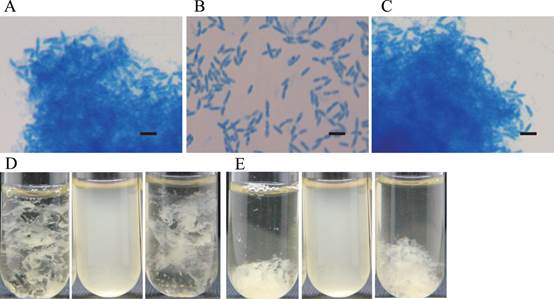科学家揭开废水处理主流技术关键环节神秘面纱
来源:Environmental Microbiology
作者:邱东茹等
时间:2018-04-17

活性污泥法是全球市政污水和工业废水净化处理的主流技术。我国科学家成功揭示活性污泥法关键环节——活性污泥菌胶团形成的分子调控机制,为进一步改进这一技术打下良好基础。
这是记者20日从中国科学院水生生物研究所获得的消息。据该所专家介绍,我国每年产生的城镇生活污水和工业废水量达765亿吨。目前,我国已建成城镇污水处理厂4000余座,日处理规模达1.7亿立方米,超过90%的市政污水和50%的工业废水采用活性污泥法进行处理。
据专家介绍,活性污泥法可有效去除污水中的有机物、氮磷营养和重金属等污染物,其关键在于活性污泥细菌可以形成菌胶团,从而在活性污泥工艺中得以富集,发挥有机污染物降解和除磷脱氮功能。
中国科学院水生生物研究所邱东茹学科组通过深入研究揭示了活性污泥菌胶团形成的分子作用机制。该课题组发现,动胶菌等活性污泥菌细胞质膜上的PrsK感受器激酶接收未知信号后发生自磷酸化并将磷酸基团传递给响应调节蛋白PrsR,活化后的PrsR结合到PEP-CTERM基因启动子上游的增强子上并与结合在启动子上的RpoN sigma因子互作,启动PEP-CTERM基因的转录,PEP-CTERM得以大量表达。而活性污泥菌正是利用自身合成的胞外多糖和PEP-CTERM蛋白质形成网状胞外多聚物,包裹大量细胞形成菌胶团。
该所相关负责人说,“菌胶团可能有抵抗原生动物捕食和其他未知功能。这些研究发现为揭示活性污泥菌胶团形成机理打下良好基础,对活性污泥工艺处理效率提升、污泥膨胀控制、剩余污泥减量和资源化利用等新技术开发具有参考意义。”
相关研究成果在线发表在国际期刊《环境微生物学》上。(来源:新华社 谭元斌)
Both widespread PEP‐CTERM proteins and exopolysaccharides are required for floc formation of Zoogloea resiniphila and other activated sludge bacteria
原文链接:https://onlinelibrary.wiley.com/doi/epdf/10.1111/1462-2920.14080




